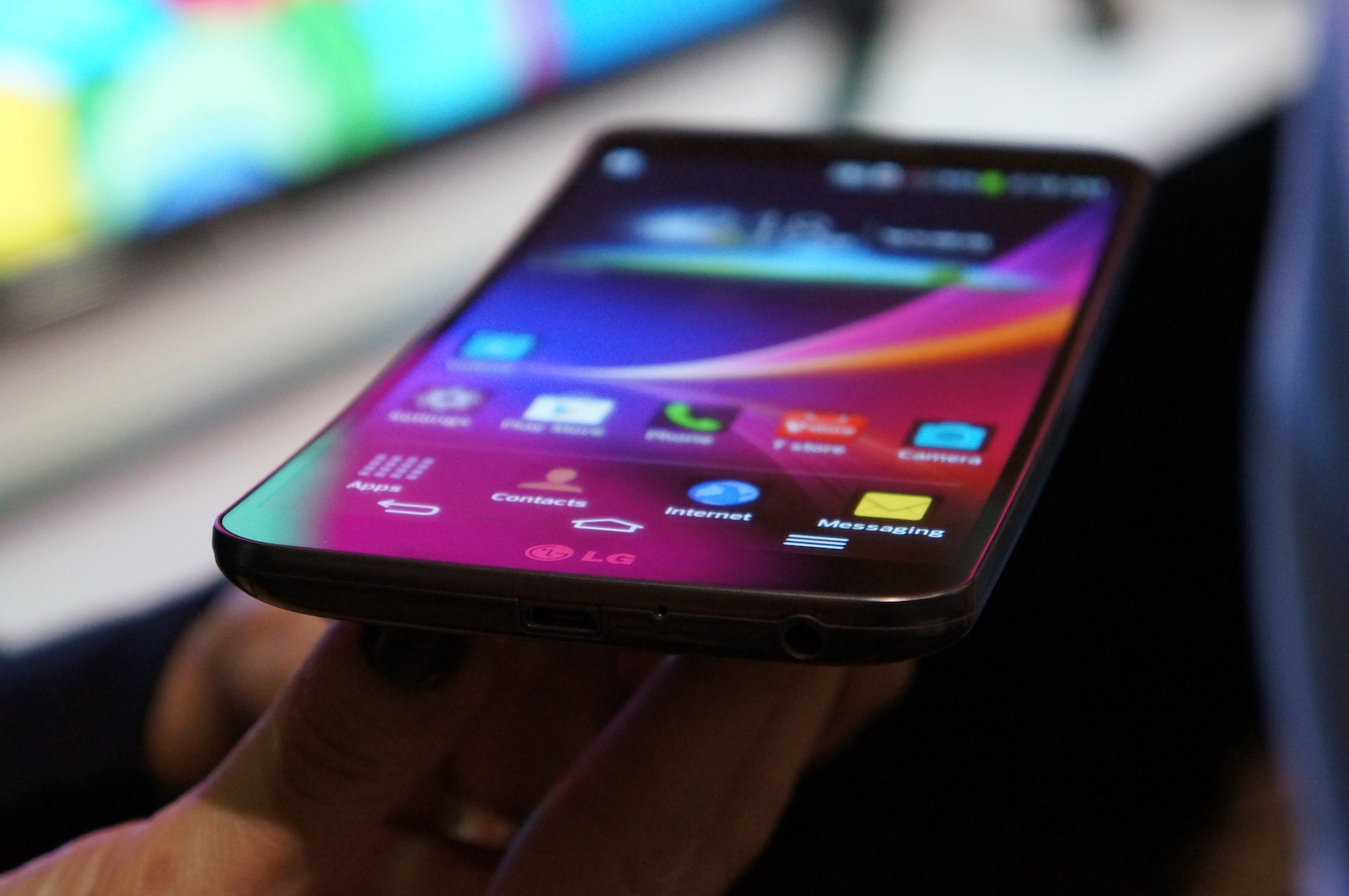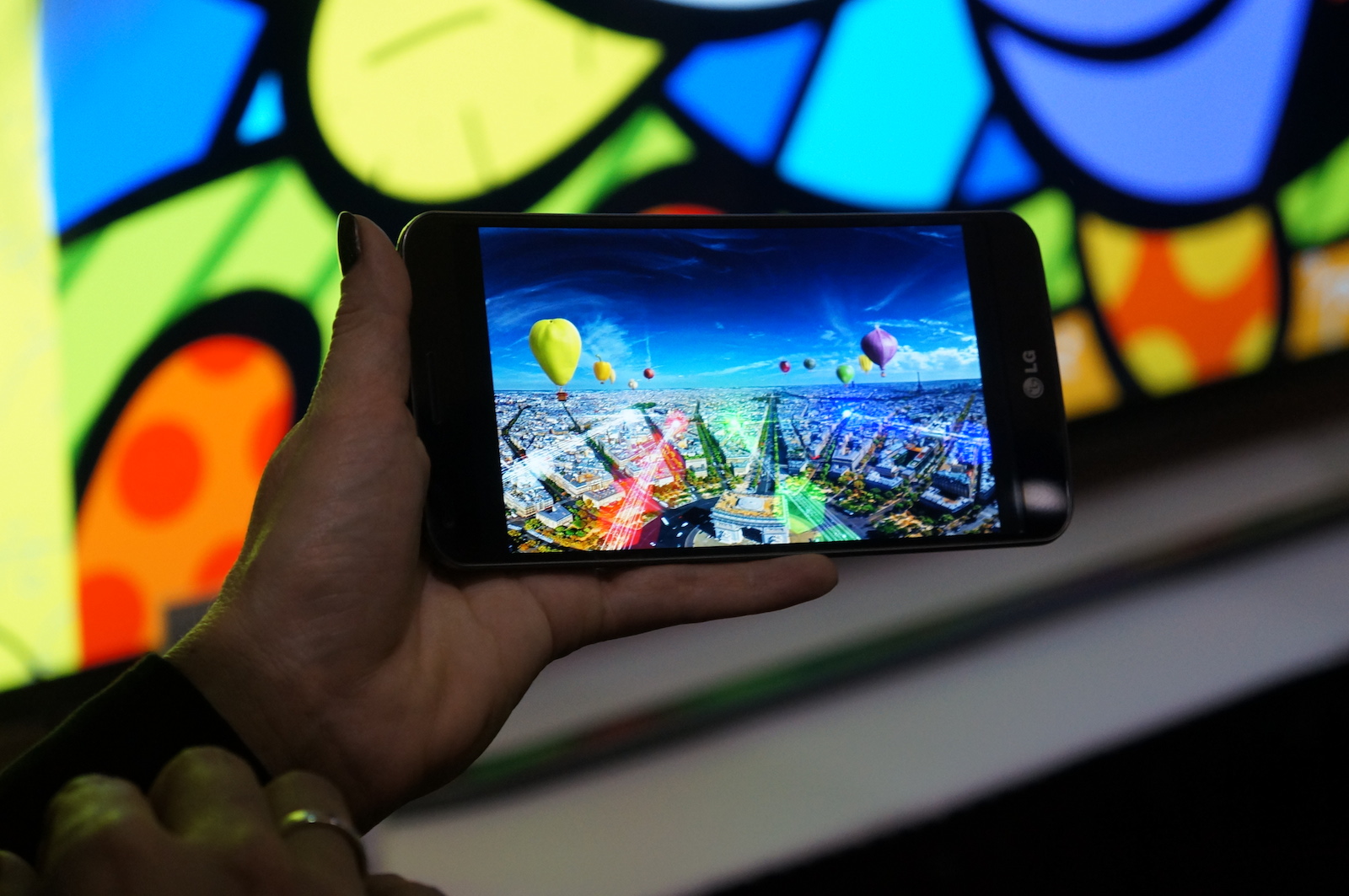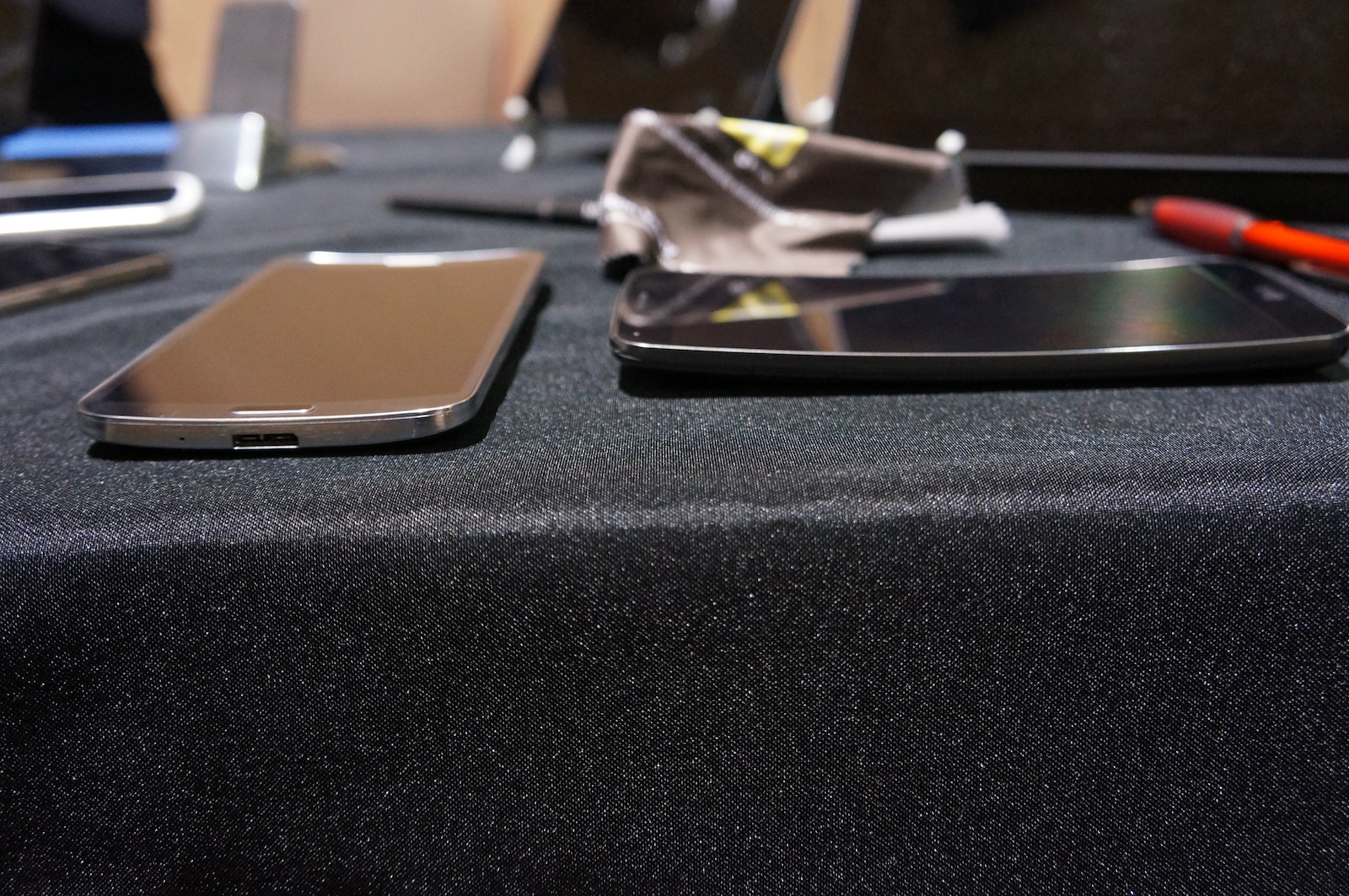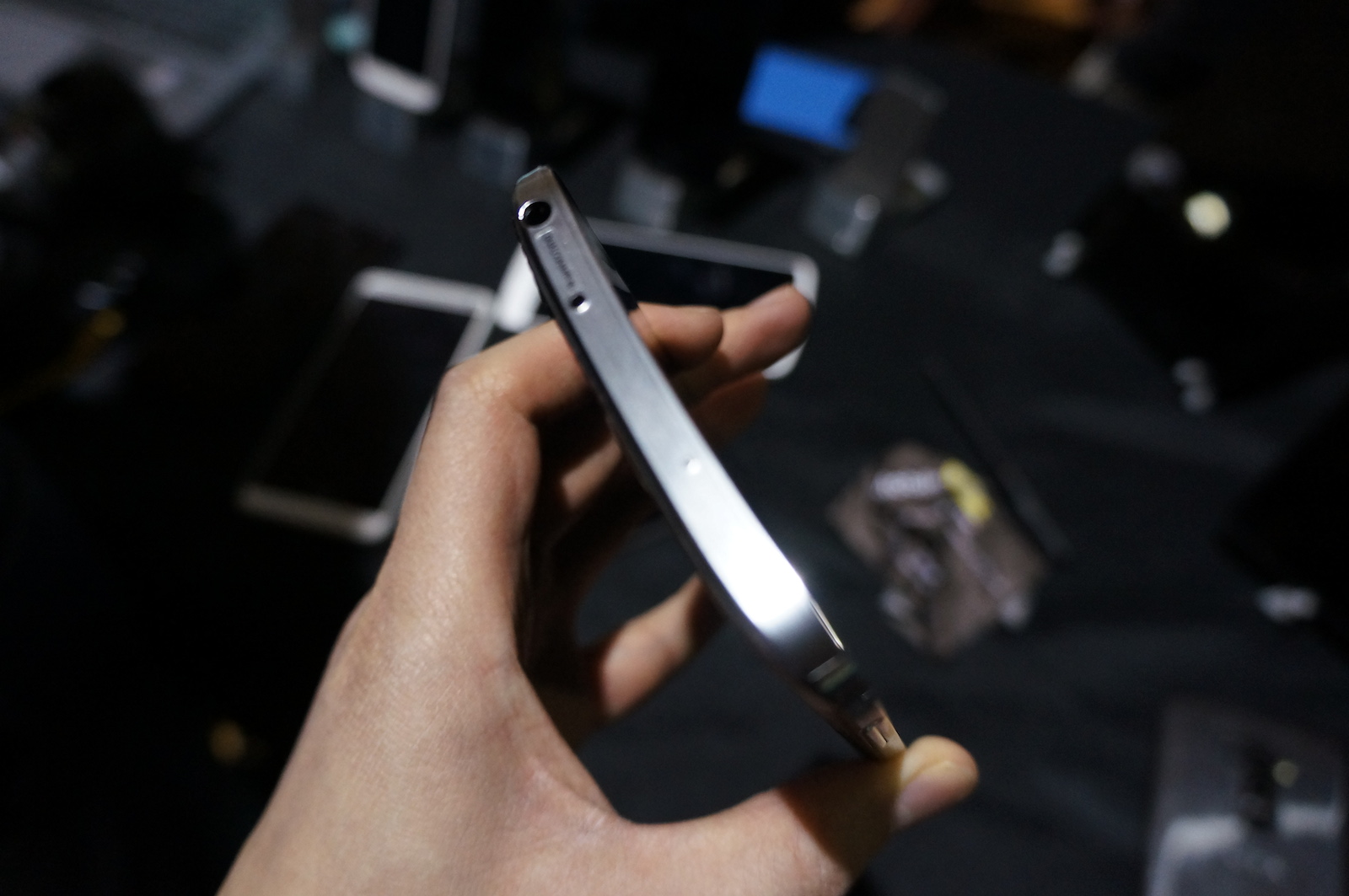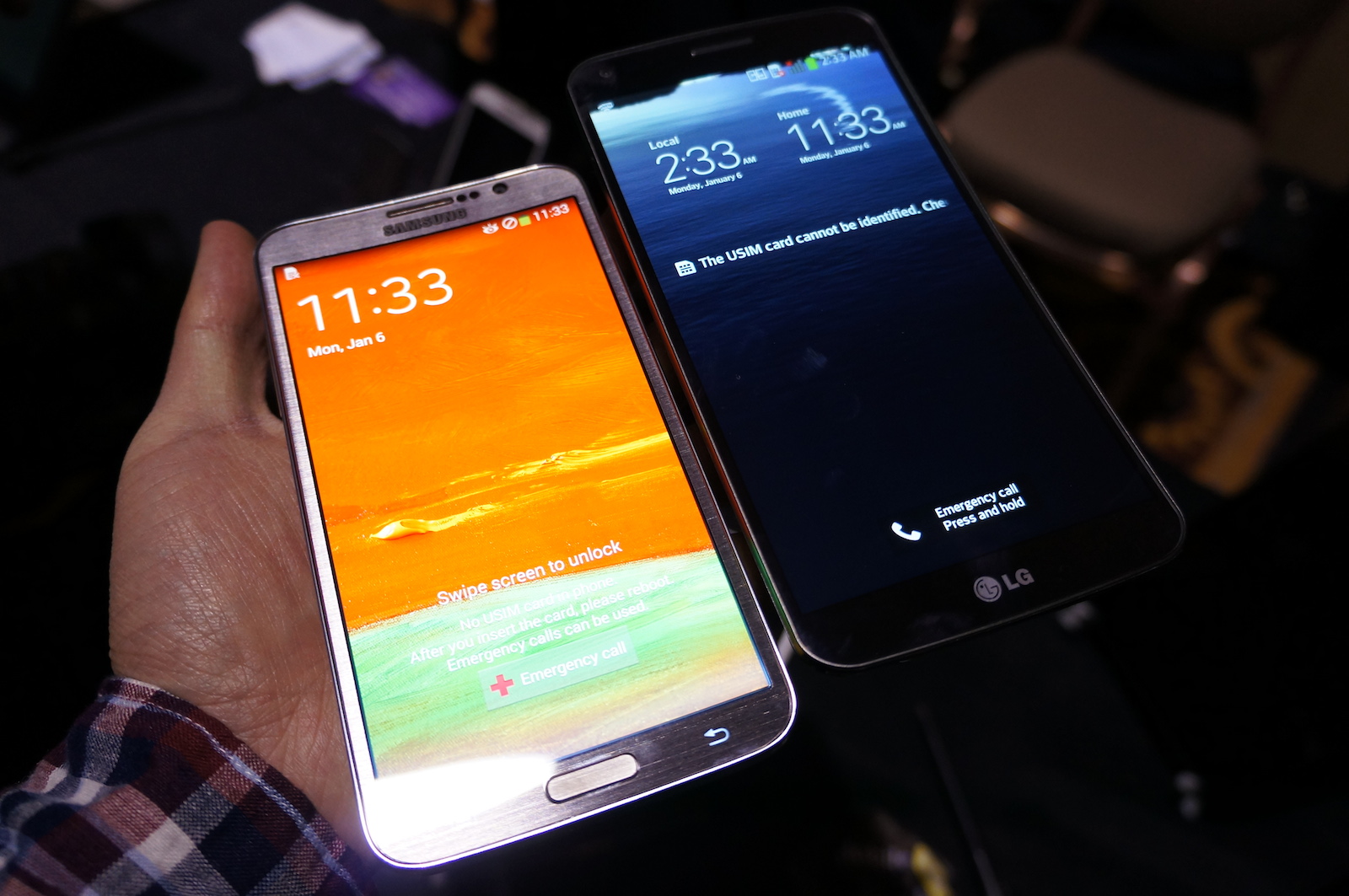LG's G Flex Curved Phone Headed for Major U.S. Carriers
At long last, the G Flex is on its way to American shores.
We've already heard a ton about the G Flex, but now the flexible smartphone is finally officially coming to the United States. The device was first unveiled back in October of 2013 for its Korean launch. LG never ruled out an international launch, but it kept pretty quiet about its plans. Then, in December, LG held an exclusive event in California to show the American press the G Flex in person. Obviously, LG was preparing for a U.S. announcement.
Just a few weeks later, at CES 2014, LG confirmed plans to launch the G Flex in the United States. The South Korean company is partnering with AT&T, T-Mobile and eventually Sprint to bring the G Flex to Americans. Unfortunately, we don't know when it's coming out or how much we can expect to pay for the phone.
The International version of the G Flex comes equipped with a 2.2 GHz Snapdragon 800 processor, 2 GB of RAM, 13-megapixel rear-facing camera, 32 GB of storage, and a flexible 3500 mAh integrated battery. This, of course, is in addition to the 6-inch 720p POLED display.
Check out all of our CES 2014 coverage!
Follow Jane McEntegart @JaneMcEntegart. Follow us @tomshardware, on Facebook and on Google+.
Get Tom's Hardware's best news and in-depth reviews, straight to your inbox.

Jane McEntegart is a writer, editor, and marketing communications professional with 17 years of experience in the technology industry. She has written about a wide range of technology topics, including smartphones, tablets, and game consoles. Her articles have been published in Tom's Guide, Tom's Hardware, MobileSyrup, and Edge Up.
-
Christopher Shaffer This is interesting, but I really thought flexible and printable electronics would have been given more practical uses by now.When I gave my EE report on the future of printed electronics, my vision was definitely a lot more vast than a novelty phone; I'd expect LG to take better advantage of the tech if one EE student can come up with better uses (not tooting my horn; shunning LG for lack of innovation). I gave that report 2 years ago, now.I'm sorry, I just don't see any practical application here. Samsung's Nexus S 4G was curved, and that was nifty and comfortable, but other than being able to bend the phone to your face and the initial novelty effect, this seems pointless.Reply
Samsung demoed the same tech in 2010 at CES:
http://www.youtube.com/watch?v=dY_ADCTBKVE
I was thinking they might be a bit more creative, like using a flexible synthetic network of nerves to control carbon nano mesh for use in prosthetic "muscles", but I guess a flexible phone is more profitable. See: http://www.wired.com/wiredscience/2009/03/nanomuscle/ -
Rhinofart That thing is huge! Is it really flexible though? Can I bend it and stuff? If not, then drop the flexible description.Reply -
someguynamedmatt Just because you can, doesn't mean you should. I look at this the same way I look at that curved television put out by whoever a short while back - is this really the best way they could possibly come up with to use their funding? Aren't there better things to be doing than handing off design tasks to the marketing department so they can pile more gimmicks onto their phones?Reply -
applegetsmelaid "That thing is huge! Is it really flexible though? Can I bend it and stuff? If not, then drop the flexible description."That's what she said.Reply -
Christopher Shaffer Reply12384190 said:Gimmicky with only a slight curve and lost interest in it when I saw the 720p spec.
I understand this due to comparison with other "HD" phones, but to be real: at a screen size that small it's literally impossible for your eyes to see the difference between 720p and 1080p. The LED density and pixel density can make a difference, but the resolution alone doesn't actually mean much.
Generally, on TVs the rule is that 6ft or greater viewing distance on a screen size under 40in the differences between 720p and 1080p are *nearly* imperceivable. I'm not sure how it applies on hand-held viewing distances, but try viewing a 720p video and a 1080p vid of the same movie/show etc. on an iPad retina display. If they're both truly the correct resolution and bit rate, you won't be able to see the difference, because the pixel density (PPI) is what matters.
This article does a fairly good job of explaining this: http://www.tested.com/tech/371-why-pixel-density-matters-more-than-just-screen-size-or-resolution/
1080p is really a novelty and bragging right on phones; 720p is more than enough.
